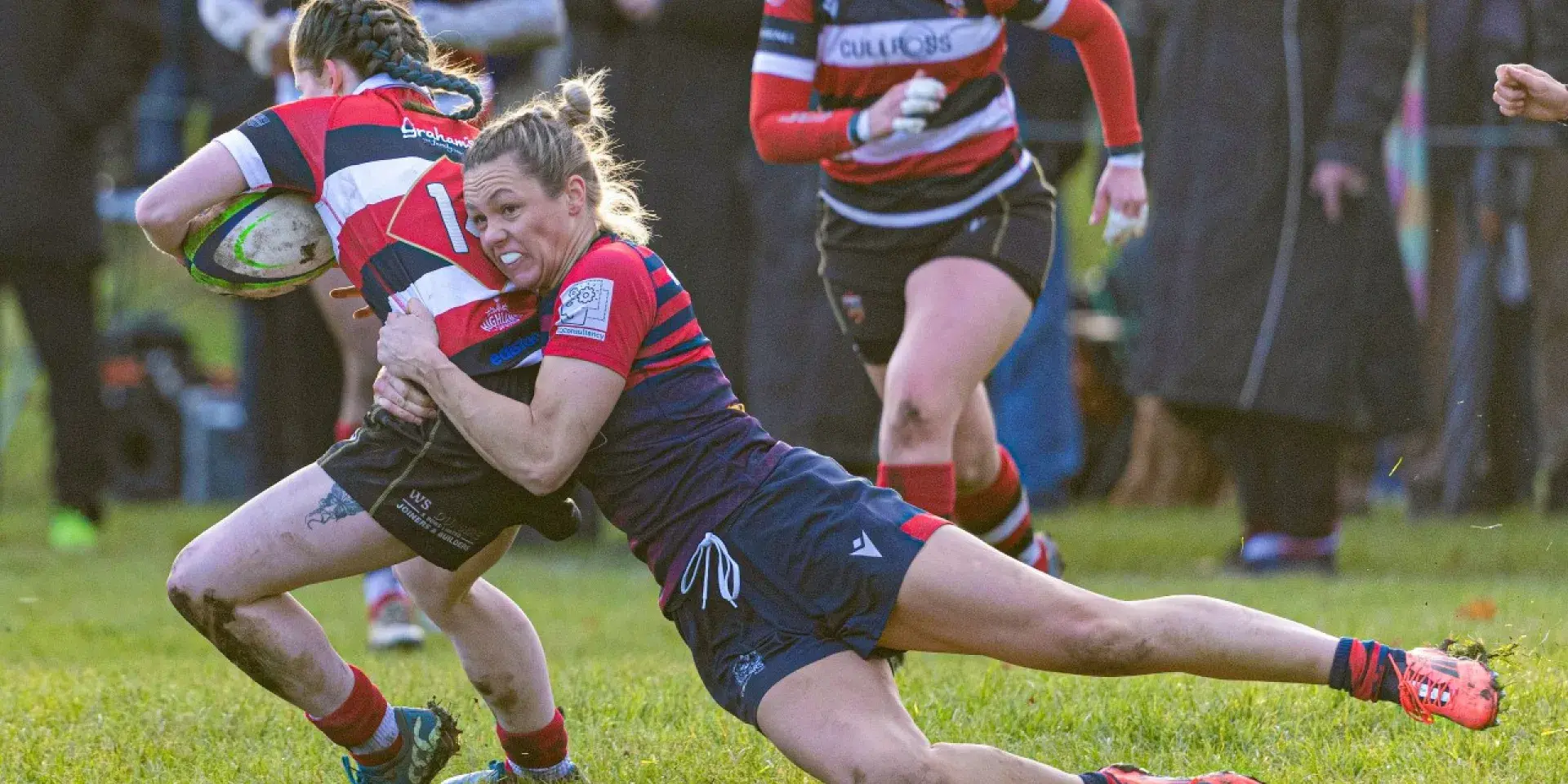Changes to the tackle height law in women’s community rugby in Scotland is linked to reductions in head-to-head and head-to shoulder contacts, the study found.
Video analysis
A study compared more than 11,000 tackles between the 2022/23 season, before the reduced tackle height law was trialled, and the 2023/24 season, when it was introduced.
Experts found 21 per cent fewer upright tackles and a 34 per cent increase in tacklers entering the tackle bent at the waist, the recommended technique to reduce contact to the high-risk areas of the head and shoulders.
In collaboration with Scottish Rugby and World Rugby, researchers used video analysis to study the impact of the lowered tackle height law which World Rugby, the sport’s governing body, introduced for community rugby in an attempt to improve safety for players.
Initial contact
The research found a 64 per cent reduction in tacklers making initial contact with the ball carriers head and neck – one of the primary causes of sports related concussion.
Lowering the tackle height was also associated with a 17 per cent reduction in the rate of head-to-head and a 35 per cent reduction in head-to-shoulder contacts for the tackler, the study found.
The study, which is the first to evaluate the lowered tackle height law in women’s community rugby, shows a positive change in player behaviour, researchers say.
Injury prevention
The findings can inform future injury prevention initiatives in women’s community rugby in Scotland and beyond, they add.
World Rugby recommended an opt-in international trial of lowering the tackle height from the shoulder to below the sternum as part of a drive to reduce the risk of head-on-head contact and concussion in rugby union games.
The trial was adopted by Scottish Rugby for the 2023/2024 season alongside other nations including Australia, England, France, Ireland, Italy, Japan, New Zealand, South Africa and Wales.
Community matches
Researchers at Moray House School of Education and Sport analysed video footage and injury data from 34 Scottish community women’s rugby matches from the top-level Premiership to the third-tier regional leagues.
The analysis used footage from Scottish Rugby which recorded players’ activity including tackle type, body position, contact point and head contact.
Points of contact between players alongside match events and tackle characteristics were coded according to guidelines developed in collaboration with World Rugby and the University of Cape Town.
They also discovered a 19 per cent reduction in contacts above the sternum – known as the red zone – between the tackler and the ball-carrier. There was a 29 per cent reduction in head-to-head proximity for the tackler, alongside a 33 per cent reduction in head-to-head proximity and a 48 per cent reduction in head-to-shoulder contact for the ball-carrier.
Points of contact
Positively, there were no increases in the rate of the tacklers head making contact with the ball carriers’ knee or hip, which has previously been associated with an increased risk of concussion.
Sanctions - including penalties, advantages and yellow cards related to high tackles increased significantly from 3 to 8 in the 2023/2024 season. The number of tackles decreased significantly, but there was no significant change to the rate of other game player metrics.
The rate of concussions and injuries when comparing the 2022/23 (pre-trial) and 2023/24 (trial) seasons did not change significantly but the number of reported injuries overall was very low and may have impacted these findings.


